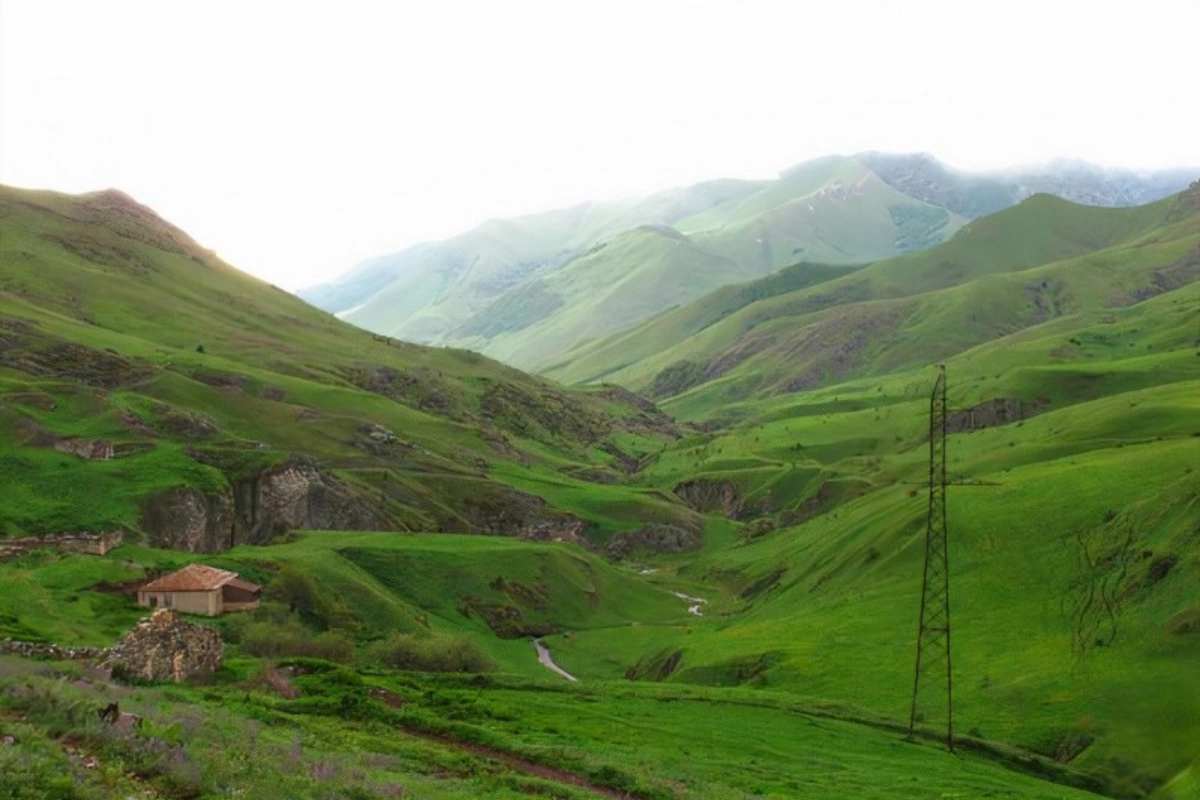
“You can talk about a church, you can talk about a mosque, you can talk about any other temple. But for us our houses were our temples.” Dr. Mammadov said. “They were destroyed. And no one talks about that…”
Countryside of Lachin District, Azerbaijan. Photo: Lachin Regional Government
Dr. Gulmammad Mammadov is one of 700 000 Internally Displaced Persons (IDPs) in Azerbaijan. Until November of last year, one out of every nine citizens of Azerbaijan was counted as an IDP and had been living with that title for nearly 30 years. Fighting broke out in 1992 over the internationally recognized Azerbaijani enclave of Nagorno Karabakh, largely inhabited by ethnic Armenians. Between 1992 and 1994, Armenian forces systematically moved through not only the enclave but also seven other surrounding regions of Azerbaijan, taking control of towns and villages, and violently driving residents toward the east and north of the country. One of the first such regions to be occupied was Dr. Mammadov’s home – Lachin. As we talk, I watch him travel back in his memory to what he has lost.
He summons childhood images of a tucked away house in their village, Sheylanli, at the base of green, mossy mountains. Fertile lands, forests, natural springs, and clean air. He remembers waking at dawn to tend to the animals and telling time by the light silhouetting the mountains. Most of the year would be spent in this area. “We had this organic communication with nature. With the soil, with the land, with trees… with springs and rivers. Our culture and our traditional practices were formed around these things.”
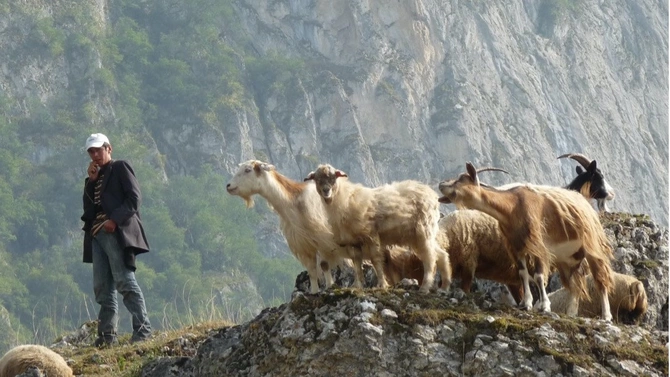
Winters were cold in the high mountain pastures, too cold for livestock. In late autumn, folks with modest numbers of their own animals might take them 4 km below Sheylanli into the deep valley of the Hakari River which was generally snow-free being some 800 m elevation lower. However, since 1987, Gulmammad’s father had been manager of a Soviet collective farm with flocks too big for such measures. Each large highland farm was essentially paired with a lowland winter settlement. In late October each year, their livestock would be laboriously walked down to the lowlands east of Karabakh in an annual multi-day odyssey. For the Sheylanli herds, the lowland pastures were at Takhta Korpu - a desolate camp in semi-desert near Aghjabadi. There winters were less frigid than in snowy Lachin, but by May everyone would be glad to be heading back to the mountains before the onset of the scorching steppe-land summers.
In 1991 Gulmammad was seven years old. As autumn ended, they packed a few bags and locked up their house, expecting to return a few months later. His father and the other workers walked the livestock from Sheylanli through Lachin, Shusha, Khankendi, Khojaly, and Aghdam until they reached the Aghjabadi region – where the family camped together in the Takhta Korpu steppe. A week later, the rest of the family would pile into a truck for the day-long drive to join the men.
By the late 1980s, his family had re-routed how they made the journey between Lachin and Aghjabadi. It had become dangerous for them to take the more direct path that traversed Armenian-majority areas of Karabakh. “Armenian youngsters would throw stones at our shepherds and trucks. I remember we would cover the top of our truck with a tent so that if the stone was thrown, it didn’t hit us.” To avoid trouble, they travelled a circuitous route staying outside of those areas and adding substantial length to the journey.
They would not be able to avoid this kind of hostility forever. At the end of February 1992, Dr. Mammadov’s family sat in their temporary shelter in Takhta Korpu listening with growing dismay to the worsening situation in upper Karabakh. Things looked bad. And in February they watched with horror as news reports showed evidence of the

Normally by May they’d have packed up camp and started driving their flocks on the long, return route to Sheylanli. But news remained bad and they delayed their return. On May 18th, reports suggested that the town of Lachin had been captured, along with the Lachin Corridor – which linked the then Nagorno Karabakh Autonomous Oblast to Armenia proper.
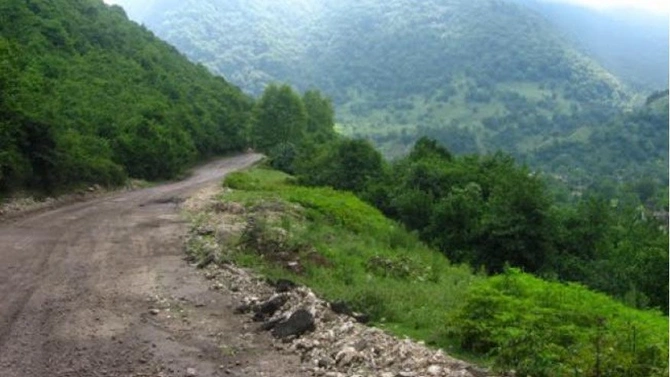
“We were waiting for things to settle, that’s why we didn’t go earlier. Thank God. If we’d gone back a few weeks earlier… it would have been tragic for us.” Now there was no longer a way to reach their village. Indeed, people were coming the other way: refugees fleeing in droves. Within weeks Takhta Korpu – their seasonal winter livestock camp – had become the Takhta Korpu IDP camp. Like so many others, the Mammadovs initially assumed that the awful spell would soon be broken. “We had this hope to return back very soon; but month after month, year after year, we waited.”
Indeed, Dr. Mammadov has never returned to his childhood home after that last livestock migration. He and his siblings do not have a single photo of themselves from before 1993. He finally left the camp after nine years to go to university in Baku – a remarkable achievement in itself after such a difficult adolescence. Two years after his departure, his family also found a way to leave Takhta Korpu - but only to work on the farms of non-IDPs who had gained land through privatization in early 1990s. Since their own lands were still occupied, IDPs did not benefit from such privatizations, and lost the financial stability that land ownership provides. Gulmammad’s family instead moved from farm to farm, uprooting themselves four times before finally being able to afford the sub-lease on a piece of municipal land that had itself been leased to a non-IDP. To this day, Dr. Mammadov’s brother is narrowly avoiding being evicted from land he has leased for 17 years - the landlord having decided that he wanted to repurpose it. “We were mountain people… we ended up in these grey places.”
“We were mountain people… we ended up in these grey places.”
The cool green mountains of Lachin and the scorching summer steppe of Aghjabadi are two different worlds. Older people who had never before spent a whole summer separated from their mountain lands, found their lives cut short from living year-round in the camp. There were viruses and diseases their bodies simply could not fight off. “Within weeks of each other, we buried three sisters in their early 20s… people didn’t just die in the war, we kept dying...” Mountain people were transplanted into a desert. The result was a massive graveyard on the outskirts of the camp.
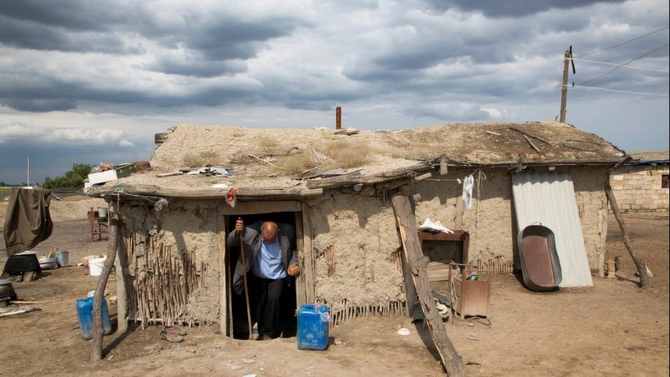
Gulmammad’s family would learn how to relate to the new land. Things didn’t come naturally like the work had back in their village. Intimacy with a place bends and moves. The land knows its people – and its people know it. Like the refugees, the animals were bewildered. They ate thistles instead of grass, gave birth to paralysed offspring and produced bitter, unusable milk. After the soft black earth that offered up its produce year after year without effort, the new earth seemed to crumble in their hands. What could they coax to grow in this place?
These were harsh conditions for a displaced people. It took a few cycles around the sun for the family to harness methods of production foreign to them – desert plants - melons and fruit trees did not behave like root vegetables and apple trees. They dug canals, relied on frail infrastructure, and were dependent on their government, like children, waiting for direction, unsure of how to do the most basic of tasks. This uprooting is something only those who experience it can understand.
Dr. Mammadov’s story turns from pain to resolve. At 14 he would begin to teach himself the Azerbaijani school curriculum - independently, without a teacher. He would later astound his family and the whole community of Takhta Korpu by winning a full scholarship to Baku State University. From there his ongoing success would place him in a prestigious master’s program, then take him on to Italy, and Syracuse, New York. He would receive his PhD in Physics and teach at Syracuse for eight years. In 2016, having achieved what must have felt like a dream life for an Azerbaijani youth, this IDP child returned to Azerbaijan, having proven that even displaced children can achieve what they set their mind to. New York was not home. He longed for somewhere he belonged, somewhere much closer to that locked door in Lachin.
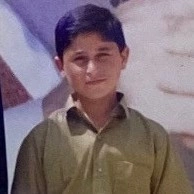
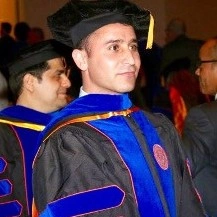
Gulmammad, 14 yrs old, 1998, visiting cousin in Baku, and 31 yrs old, 2015, Syracuse University, graduating with his PhD in physics.
Four years later, in November 2020 that door unlocked. Lachin was returned to Azerbaijan’s control and governance. Once again, overnight, his future was changed. Today, Dr. Mammadov is the Vice-Chairman of the Karabakh Community of Azerbaijan. Like the rest of the 700 000 displaced people of Azerbaijan, he will soon get his chance to step foot on the land from which he’d been barred since 1992… though clearing landmines could take years. “Our desire, our longing to return back to our homes has been distorted and mispresented for decades. Even a seasoned foreign diplomat once asked me with doubt, ‘if your lands were returned, would you want to go back?’ Of course I would! I am still outraged by the absurdity of that question. My family home is as sacred to me as any shrine or cultural site could be.”
He hasn’t been able to pick out his home on satellite imaging, though not for lack of effort. Many of the houses in his village are overgrown or destroyed having been abandoned for 29 years. We don’t yet know if his house has survived, but will cover Dr. Mammadov’s story further, as he gets ever closer to returning home.
Share on social media